Music
Čiurlionis’ music embodies the core of the Lithuanian professional music. It has served as a foundation for the 20th century Lithuanian music culture. In a short creative period which lasted a little over ten years Čiurlionis’ music progressed from traditional romanticism to compositions prognosticating the modern atonal music. Presumably, he made his first compositional attempts in Plungė, where he studied and played in the orchestra at the Prince M. Oginski’s estate. However, it was in Warsaw he took the composition with earnest intent, where since 1897 he studied composition and orchestration with Z. Noskowski. Before graduating from the Warsaw Institute of Music in June of 1899, Čiurlionis had composed a number of pieces, canons, fugues, variations and two sonatas for piano, sonata for violin and piano (did not survive), variations for string quartet, fugues for choir, while his graduation work was cantata De Profundis for mixed choir and symphony orchestra.
Leipzig saw a new step in his professional advancement. Here Čiurlionis had oportunity to experience much richer musical life, taste the latest tendencies in music and study contemporary scores at the library of Peters Music Publishing Company. In the Royal Conservatory of Music of Leipzig he studied counterpoint with S. Jadassohn and composition with C. Reinecke. Here complying with the curriculum he composed canons and fugues for piano, fugues for organ, mixed choir, a string quartet, an overture for symphony orchestra (entitled Kęstutis by editors) and the First Symphony (unfinished).
Upon completion of his studies in Leipzig, Čiurlionis started painting. That changed his musical style substantially. Refraining from romantic sensitiveness, his compositions displayed constructivist element, new architectonics and artistic idea heralding the beginning of atonal music era. All of this is best examplified in two cycles of variations for piano Sefaa Esec and Besacas, composed in 1904–1905. The ensuing preludes and pieces for piano epitomize the realisation of his new artistic ideas. According to Prof. V. Landsbergis, each new composition embodies the answer to a new compositional riddle. Opera Jūratė, started in his last years, was one more attempt to realise his artistic thoughts in yet another multilayered artistc media.
His musical output is devided into early (1896–1903) and late (1904–1910) periods. The early period embraces study years in Warsaw (1894–1899) and Leipzig (1901–1902). Those were the years of formation of his compositional style and mastering of the compositional technique. Compositions written in this period reveal his fascination with Chopin (not only stylistics, but also genres – waltzes, mazurkas, polonaises), however some of the opuses display his inclination toward polyphonic thinking, and search for new compositional possibilities and instrumental expression means.
In the late period, which is also dubed mature, Čiurlionis turns toward modern music. He is interested in pitch rows, which served as a basis for the whole composition (embryo of serialism); independent voices in his music errase the division between homophonic and polyphonic music; ostinato bass or exposition of the highest voice make an impression of visual stability correlating with his paintings; graphic melodic outline as well as the arrangement of instrumental parts and texture divulge his aspiration to open new ways toward artistic synthesis.
Regrettably, the precise number of his musical compositions is not known – substantial part of his manuscripts did not survive, while others, assumedly, perished in the fire during the war, or were lost. From the ones available for us today are sketches, rough drafts, and fragments of his musical ideas. The nature of the archive determined the fact that Čiurlionis’ works were finally published only hundred years after the composer’s death. Today, the archive amounts to almost 400 music compositions major part of which are works for piano, but also significant opuses for symphony orchestra (symphonic poems In the Forest and The Sea, overture, cantata for choir and orchestra), string quartet, works for various choirs (original compositions and Lithuanian folk song arrangements), as well as works for organ. Century-long publishing work involved a number of editors, who designed their own systhem and grouping of works. Today we have five numerations of Čiurlionis’ musical works: composer’s original numeration in opuses, composer sister Jadvyga Čiurlionytė’s numeration in opuses (I–1957, II–1975), Čiurlionis’ biobliography compilers’ numeration (1970), musicologist Vytautas Landsbergis’ numeration (1986) and musicologist Darius Kučinskas’ numeration (2007). Each of these numeration indicates both newly discovered works and their manuscripts, and results of scholarly research.
Čiurlionis’ symphonic output is not copious: two symphonic poems In the Forest (1901) and The Sea (1907), Overture for symphony orchestra, the First Symphony (unfinished) and cantata De Profundis for symphony orchestra and mixed choir. His rough draft manuscripts contain sketches of two other symphonic poems (The Creation of the World and Dies irae), the Second Symphony (Lithuanian Pastoral) and several other works (Fantasie, Largo and Prelude).
There are only several works for string ensemble: two fugues and Trio for string trio, two canons, two fugues, Andante, variations and a quartet for string quartet.
From violin and piano repertoire we have only a fragment from the first movement of Sonata in B minor.
Output for organ includes some preludes, fugues, two chorals and arrangement of a religious chant.
Over 200 works for piano constitute the largest part of his instrumental oeuvre: preludes, canons and fugues, several dozens of arranged folk songs, variation cycles, two sonatas (the First Sonata in C-sharp minor for four hands did not survive).
Vocal opuses ocupy an important place in Čiurlionis’ output as well. Among those the most significant are original and arranged folk songs for various choirs (mixed, male, women). In addition, there are two songs for voice and piano, several fugues on liturgical texts including parts for the mass.
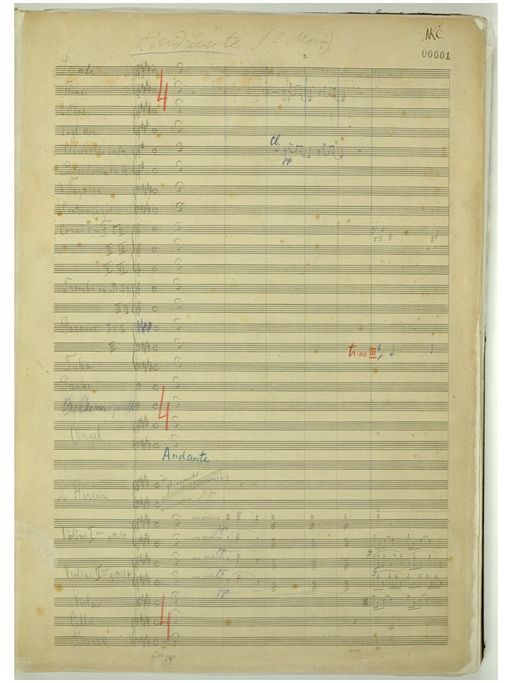
Symphonic Poem "The Sea"
- 1903/7
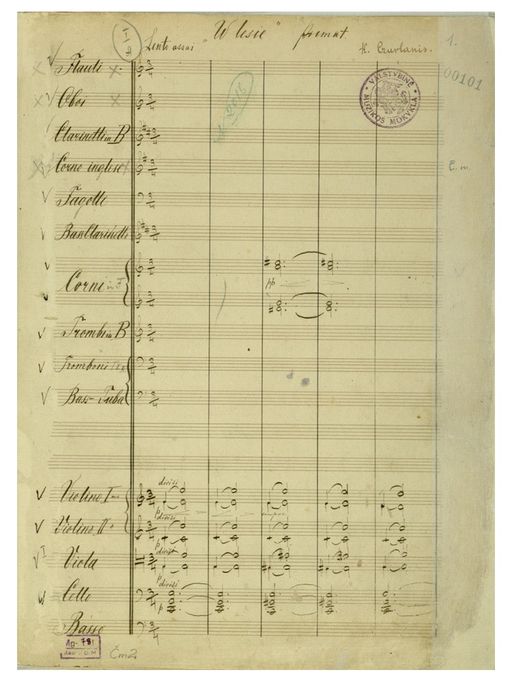
Symphonic Poem „In the Forest“
- 1900/1
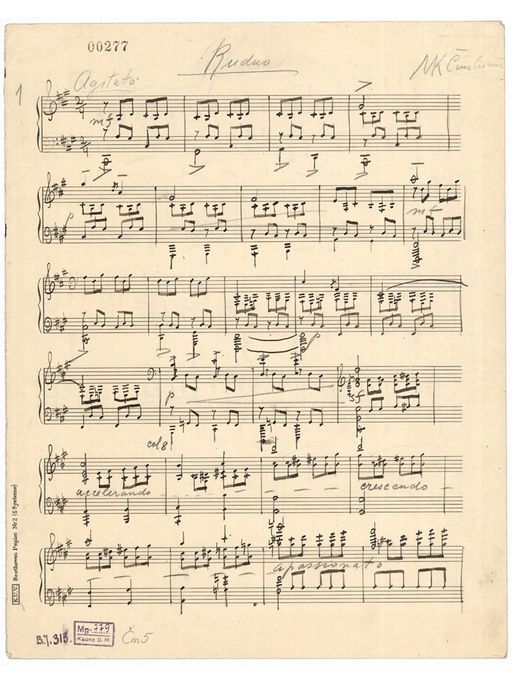
Autumn

Prelude in F Minor
- 1896

Piano piece
- 1896

Prelude in E Minor
- 1896

Prelude in F Major
- 1896

Prelude in C Major
- 1896

Canon in D Minor
- 1896

Canon in G Major
- 1896

Canon in A Major
- 1896

Canon in B Minor
- 1896

Canon in C Major
- 1896

Canon in A Flat Major
- 1896

Canon in F Minor
- 1896
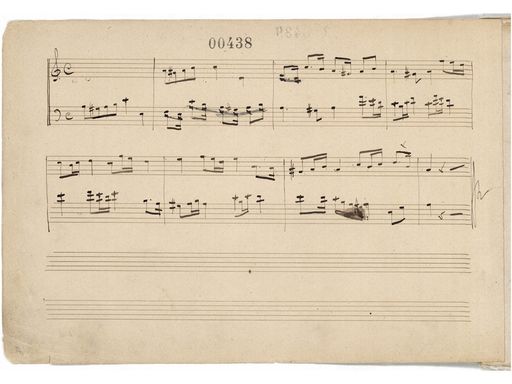
Canon in A Minor
- 1896

Canon in A Minor
- 1896
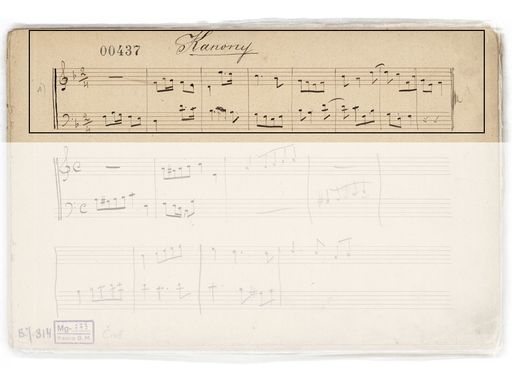
Canon in F Major
- 1896
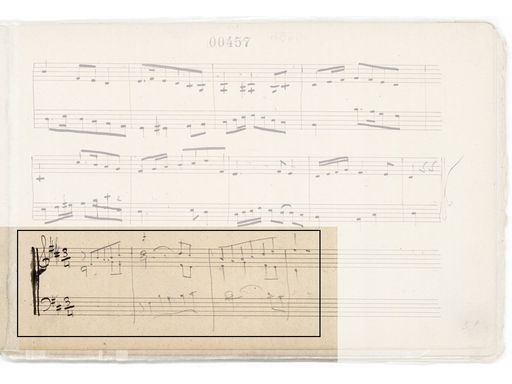
Canon in B Major / Minor
- 1897
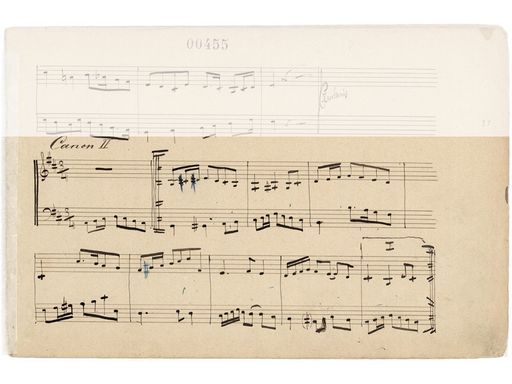
Canon in D Major
- 1897
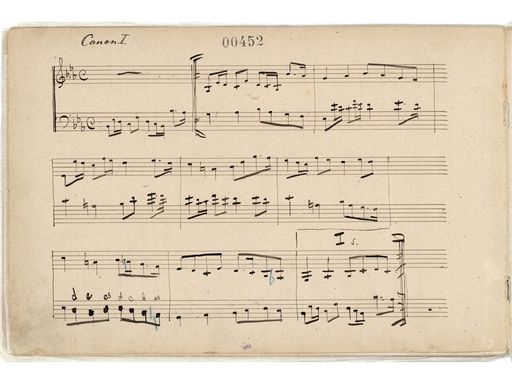
Canon in E Flat Major
- 1897
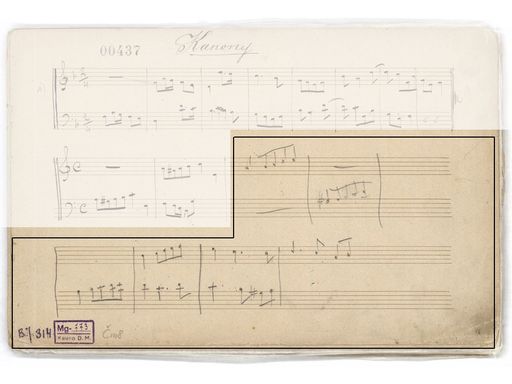
Sketch
- 1897
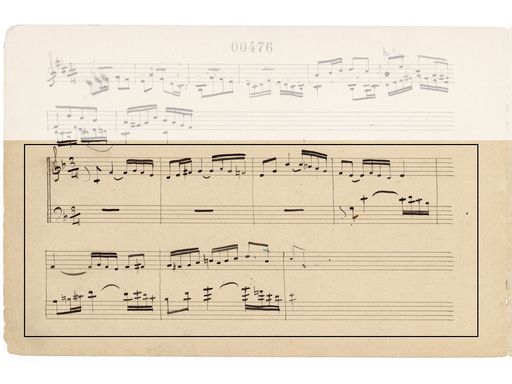
Fugue in D Major
- 1897
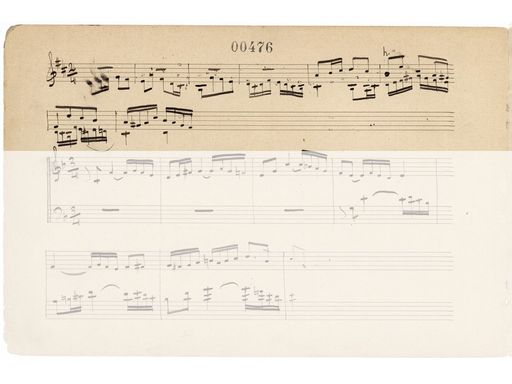
Fugue in D Major
- 1897
